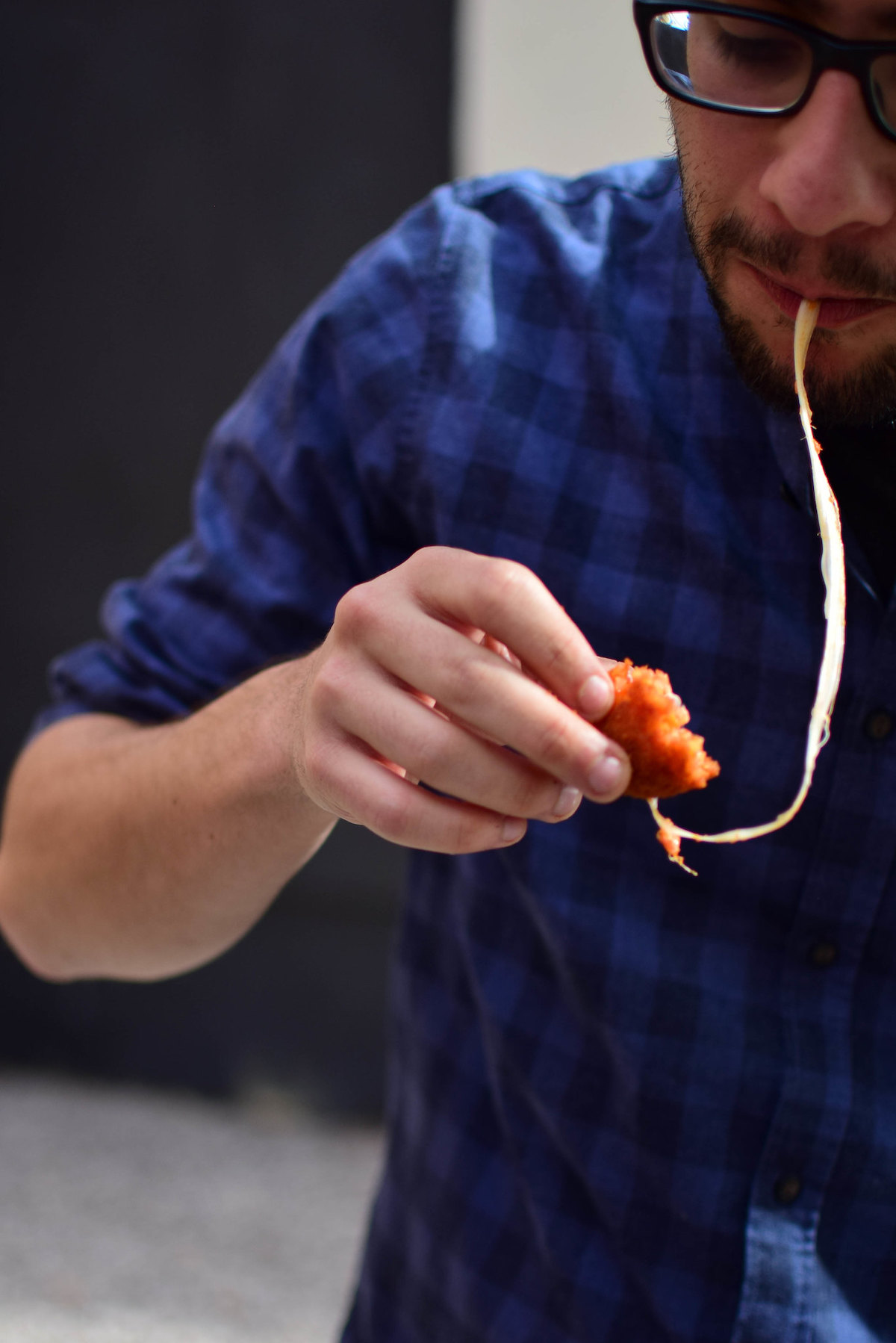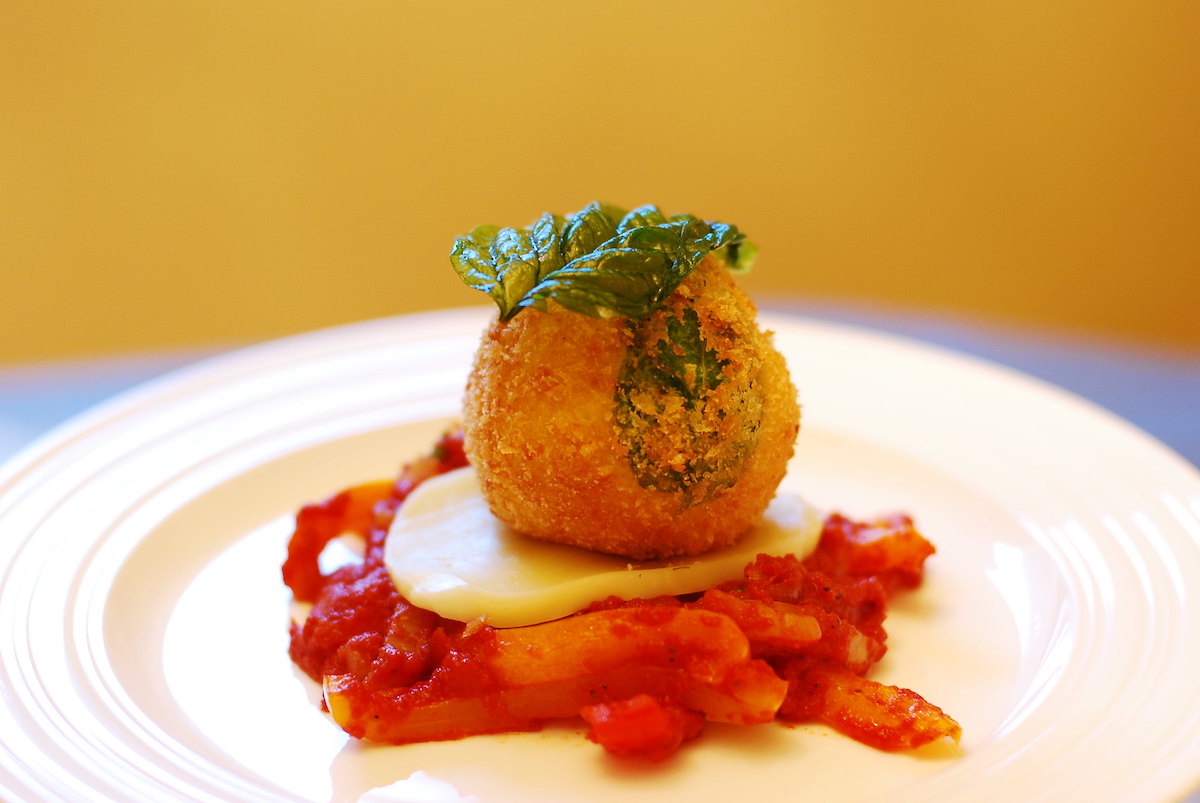Supplì and arancini: two words that are popping up on menus everywhere. They are both beloved Italian street foods, and are both fried. But what’s the difference between them?
Italians love fried food. In Neapolitan pizzerias, there’s the frittatina di pasta (fried pucks of pasta). In Puglia, no Sunday is complete without homemade panzerotti (fried, stuffed pockets of dough). But two cousins, both fried balls of rice, stand out.

Roman supplì and Sicilian arancini are, on the crispy surface, quite similar. But they each reflect a unique culinary history, way of eating, and like everything in Italy, the story of a place.
Supplì
Supplì are oblong and round-tipped, like a pill big enough for a T-rex. To make them, you always need pre-cooked, short-grain rice (often arborio or carnaroli, the same rice used for Italian risotto), mixed with grated cheese and whatever other flavoring you desire. In Rome, the rice is typically mixed with either plain tomato sauce or a light ragù with ground beef.
The most common embellishment is to prepare them al telefono, literally “telephone-style.” A small knob of mozzarella is enclosed in the rice before the little football is breaded and fried. The heat partially melts the mozzarella, so that when you crack open the supplì and pull the two halves apart, a wire of stretchy cheese connects them, like an old-fashioned telephone.

Who invented supplì?
So what’s the history of this dish? As you’ve probably learned from our other blogs, establishing the origins of any Italian dish often involves a leap into mythology.
Supplì seem to have originated as a street food in Rome in the early 19th century. Street vendors would park themselves on a corner with a kettle of oil and prepare “rice meatballs,” which were made both cheap and filling by the use of rice and a mixture of ground chicken livers and cheese instead of meat.
It was only later that supplì began to be served in restaurants and dedicated friggitorie, shops that only served fried food. Those shops have disappeared, and now supplì are served in sit-down pizzerias as an appetizer, or in slice-pizza joints as a quick snack (especially when the bars close).
Check out suppli with a Devour tour guide!
What does supplì mean?
And the name? Nobody knows, but there is a legend. When Napoleon occupied Rome, his troops were apparently very fond of these Roman fried rice balls. When they bit into them, they’d exclaim “que surprise!”, delighted by the gooey delights hidden by the crust. “Surprise” became “supplì” and the rest is … maybe not “history,” but it’s a nice story.
Arancini
The differences between supplì and arancini are both ingredient-based and also historical. Arancini, along with cannoli, are an iconic food from Sicily. The name means “little orange,” but we’d hardly call them little. Arancini are about the size and shape of a softball, except for those produced in eastern Sicily, which are conical, in homage to Mount Etna, the famous volcano.

The preparation of arancini is similar to that of supplì. Cooked short-grain rice is used, there are a variety of different add-ins, like ragù or strong caciocavallo cheese, and the whole thing is bread-crumbed and deep fried.
Arancini or supplì – which is better?
There are two big differences, though. Arancini are usually much bigger than supplì, about double the size. Arancini are also often stuffed with ragù (or peas or prosciutto), rather than having it mixed with the rice. An arancino’s layers are quite beautiful. The crust is straw-gold, and beneath that is a layer of deep-yellow rice, colored by a pinch of saffron. The rice contains a core of dark-red meat sauce, which spills out onto your plate (or more likely your shoes while walking down the street).

In Sicily, arancini are still sold as a one-in-all meal in bars and fry-shops, rather than as an appetizer in restaurants. The Sicilian diaspora, however, has made arancini a fixture in worldwide Italian communities.
Supplì, on the other hand, remain a mostly Roman delicacy, even though some modern chefs are beginning to put them on menus. In fact, some restaurants will have a “special” supplì in addition to the classic al telefono. (Once, at a Roman pizzeria, we enjoyed an unforgettable “Roman Countryside” supplì made with porchetta, fennel pollen, and local Frascati white wine.) If you’re traveling to Rome, make sure you try this iconic bite!

Update notice: This article was updated on August 18, 2023.
Enjoy street food like a local on our Local Rome Food Tour: Jewish Quarter & Historic Center! Discover how Romans have enjoyed street food for centuries as you sample on-the-go bites, including supplì, fried fish, pizza, and more.





